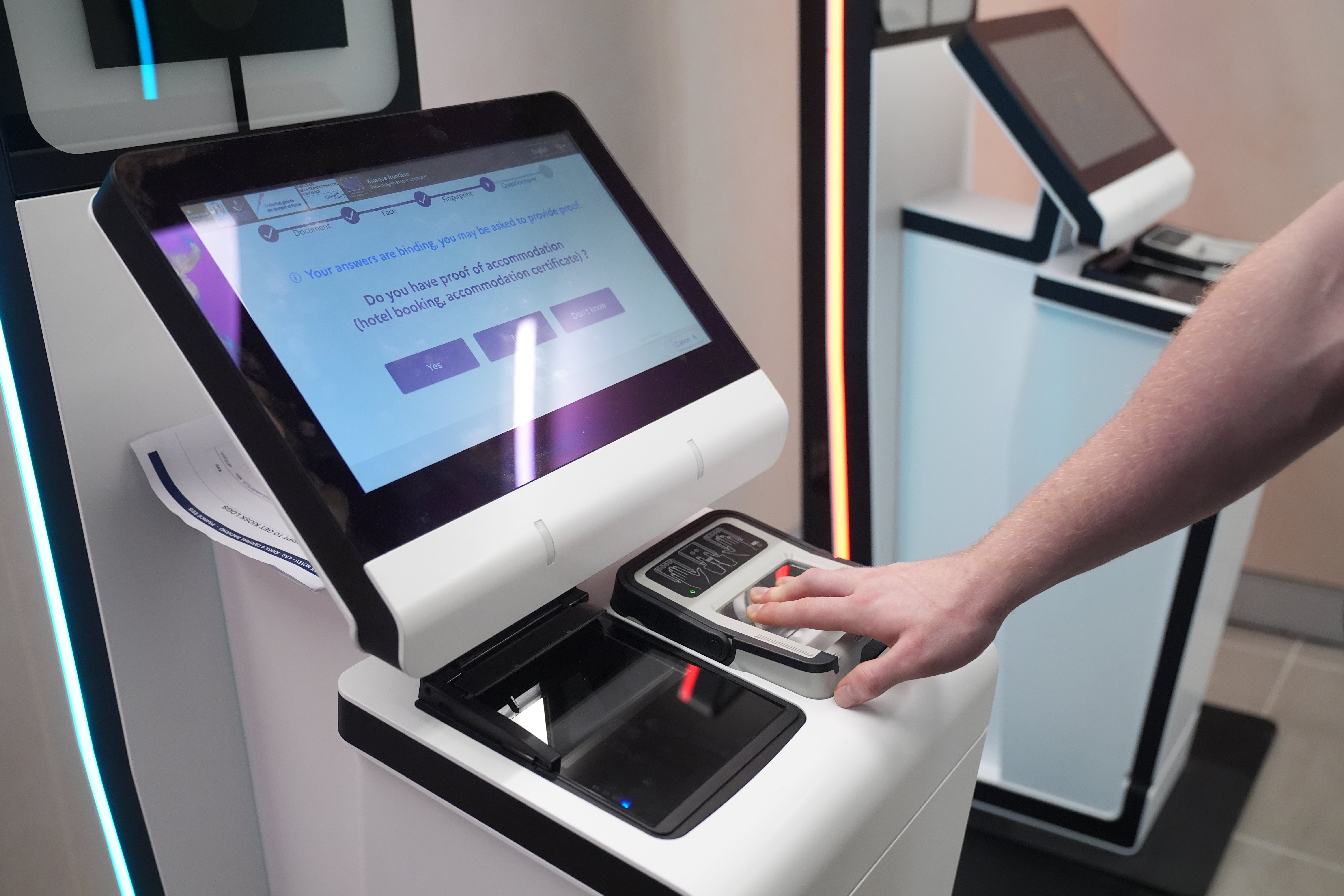
British passport holders – as well as other “third-country nationals”, from the US, Canada, Australia and elsewhere – are now subject to the European Union’s entry-exit system (EES) – requiring fingerprints and facial biometrics. The digital border scheme began on Sunday 12 October, though for the first six months it will not be mandatory for countries to collect data. Many readers of The Independent have posed questions about the EES, so here are the key issues you need to know about.
What’s the big idea?
The long-awaited entry-exit system connects every frontier crossing point in the Schengen area (comprising all EU nations except Ireland and Cyprus, plus Iceland, Norway and Switzerland) with a central database. It aims to crack down on crime, identify forged or stolen travel documents and enforce the 90-day stay limit, which applies to British travellers and other third-country nationals, within any 180-day period.
The system collects or checks biometrics from all third-country nationals when they either enter or leave at an external Schengen border. These borders include international airports, sea ports, railway stations and road crossings.
On the first occasion on which the traveller comes into contact with the system, it will create a digital record: registering their face and fingerprints, along with personal data from their passport. (Under-12s are excused from providing fingerprints.)
On subsequent crossings of the Schengen area border, the facial biometric will be checked against this record.
What is the mechanism?
Most travellers register on kiosks installed at borders. You place the photo page of your passport as indicated, and then follow the instructions.
On subsequent visits, you will either use a kiosk to confirm that your face and passport match the details stored on the system, or an eGate if these have been modified to perform the face-check for non-EU travellers.
At some frontiers, you may instead have a face-to-face encounter with a border guard who will ask you to perform the biometric checks.
What happened on day one?
Not much. The EES is being rolled out gradually over the course of 180 days, from 12 October 2025 to 9 April 2026.
Initially, member states are only required to introduce the EES on a token basis. Germany is starting with Dusseldorf airport.

Spain, the most popular nation for British holidaymakers, says: “During the six-month trial period for the EU EES, it will be implemented gradually at Spanish border crossings, first at airports, then at land borders, and finally at sea borders.”
Three countries that aimed to be fully prepared from day one: the Czech Republic, Estonia and Luxembourg.
For the first few weeks only a small proportion of travellers will be required to go through the entry-exit system.
At London St Pancras International and Paris Nord, Eurostar is seeking biometrics from a few hundred passengers per day.
Do I need to prepare anything in advance?
No. This is an additional layer of red tape at the port of entry. Up to 9 April 2026, the old-style analogue business of checking and stamping passports will continue as normal – but you may be asked for biometrics too.
It will be another year before you have to enrol for an Etias “euro visa” ahead of a trip.
What happens to EU passport holders when the EES starts?
They will breeze through the frontier via special lanes, where the only check will be a glance at their passport to check that a) it’s valid and b) it’s theirs. Just as it used to be for British passport holders before Brexit. If you have an EU passport, you can wave us all farewell and be in the bar or art gallery in record time.
How long does my ‘digital record’ last?
For three years after an interaction with the EES. Each new visit triggers another three years of validity of the initial registration. In other words, if you don’t cross a Schengen area frontier for three years, you will need to register again.

The Home Office says: “Registration is valid for a rolling three-year period or until the passport expires.” But there is some evidence that renewing a passport should not require you to register again – he system should update automatically when you present your new passport and the system checks your facial biometric. The Independent is urgently seeking clarification from the European Commission in Brussels.
Do I need to provide proof of travel insurance?
Possibly. The EES kiosks at Prague airport ask this, among other questions on the purpose of trip, accommodation, spending money and a ticket out.
Similar questions were to be asked at the Eurostar terminal at London St Pancras International and at the Port of Dover, but The Independent understands they have been taken out during the six-month roll-out phase.
This has been a requirement to enter France (but no other EU country) for many years, and has never been enforced for UK visitors. The kiosks at Folkestone, for Eurotunnel crossings, are not asking this question.
The UK government insists: “Medical insurance will not be a mandatory requirement for UK citizens travelling to the EU under EES. However, we strongly recommend that all passengers purchase comprehensive travel insurance, including medical cover, before travelling abroad.”
What if I am on a cruise?
If the voyage starts and ends in the UK, you should not need to use the entry-exit system. The Home Office says: “Sailings that start and finish their journey outside of the Schengen area (for example, at a UK port) will generally be exempt from EES checks, including for any day trips into the Schengen area that are part of their itinerary.”
If you are on a “fly cruise” and are joining and/or leaving the ship in a Schengen area port, you will need to go through the entry-exit system at the Schengen frontier.
Two minutes, 26 seconds: Simon Calder tests the new EU entry-exit system
What happened as the EU entry-exit scheme finally took effect?
Will the entry-exit system apply if my cruise ends in Barcelona?
Commuter chaos after Manchester-Liverpool train line shut
South Africa debates renaming national park dedicated to controversial president







